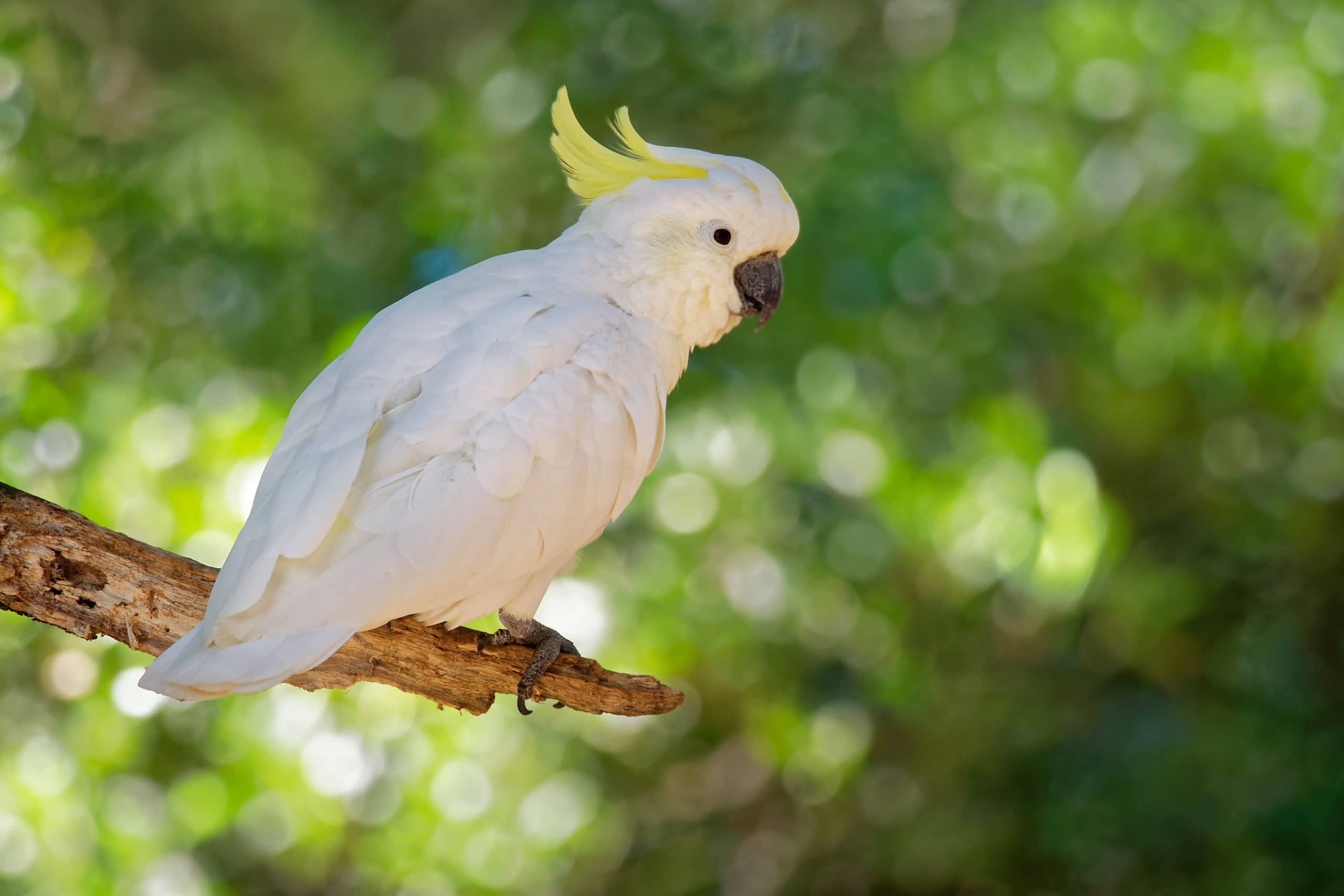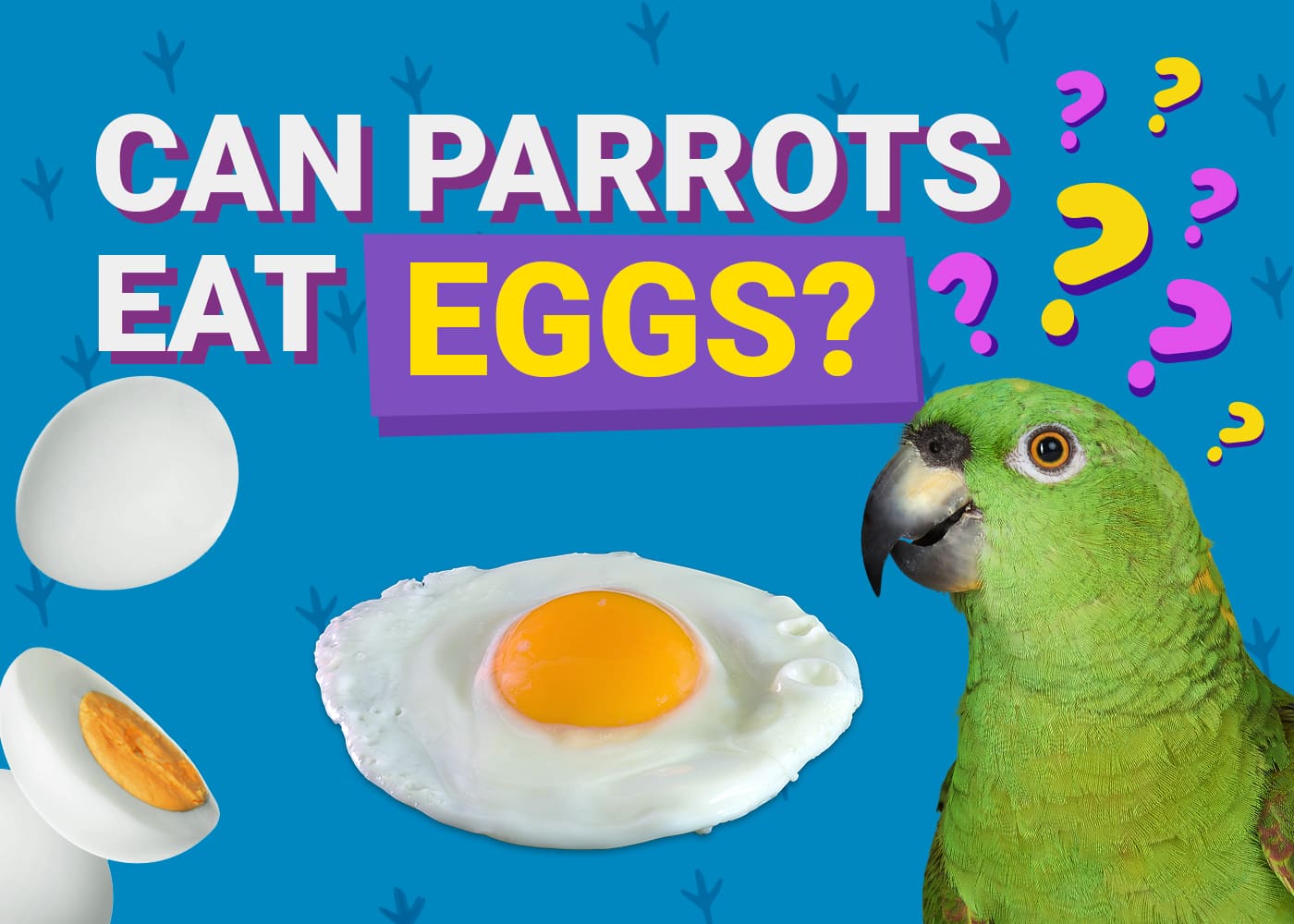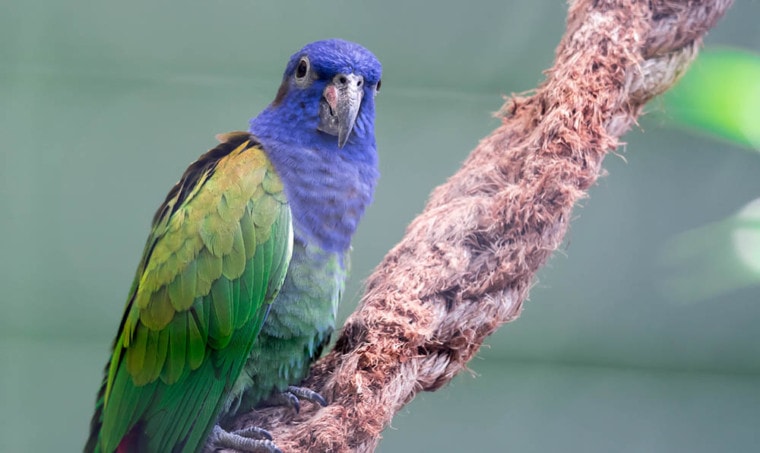
Pionus parrots are small to medium-sized birds hailing from Central and South America. These birds have stocky bodies with short tails, large eyes with a bare eye-ring, and a triangular patch of red coloring around the vent.
In all, there are eight species of Pionus parrots with five of those commonly being kept as pets. These parrots are much loved due to their sweet, quiet, and gentle nature along with their beauty.
Species Overview
| Common Names: | Blue-headed parrot, Red-billed parrot, Scaly-headed parrot, White-crowned parrot, Speckled-faced parrot, Bronze-winged parrot, Dusky parrot, White-capped parrot |
| Scientific Name: | Pionus |
| Adult Size: | 10-12 inches |
| Life Expectancy: | 30 years |
Origin and History
The eight species of Pionus parrots are found living across South and Central America in forested areas, savannas, and mountainous regions. All the birds in this species are similar in appearance to Amazon parrots, only smaller and they all have a bright red patch of feathers under the tail, making them easy to recognize in the wild.
Bird enthusiasts have often wondered why all these birds are grouped in the same species, considering they differ so vastly in color, except for the red under the tail. For decades, Pionus parrots have been captured and bred in captivity to sell as pets. In the United States, the Blue-headed parrot and the White-crowned parrot are two of the most popular Pionus parrots kept as pets because of their striking beauty.
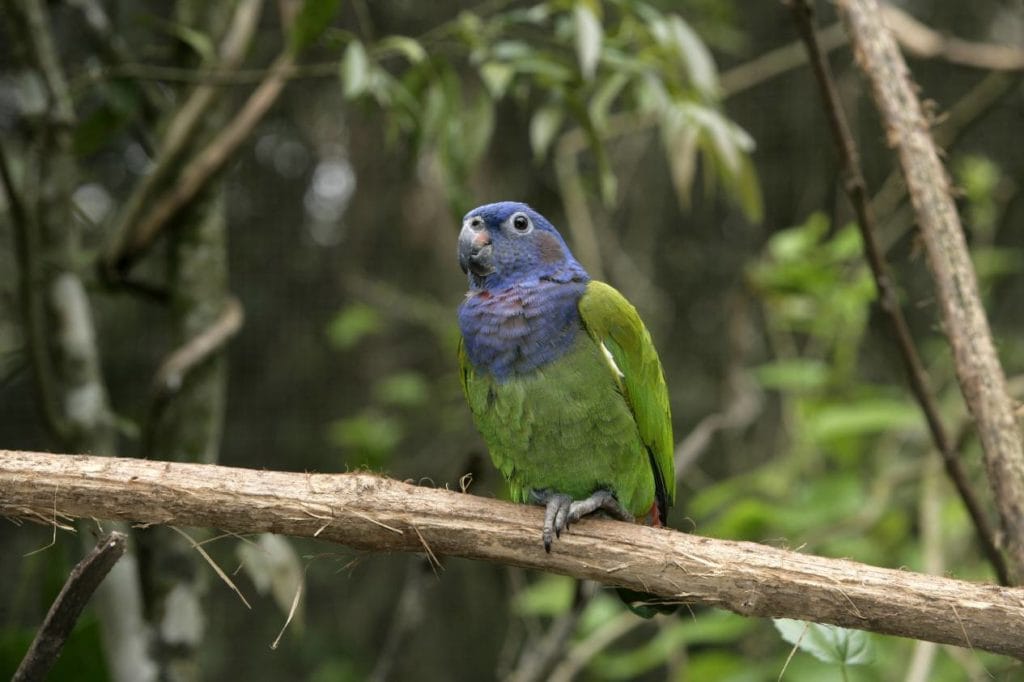
Temperament
The Pionus parrot is a docile and slightly standoffish bird that’s generally gentle and loving. Compared to other parrots, this bird is considered quiet. The Pionus parrot makes a good choice for a first-time bird owner as it’s an easy-going, sweet-natured bird that bonds well with its owner. However, this bird can get overly attached to just one person wherein it acts aggressively toward other family members, although it rarely bites.
Since these parrots are less apt to bite than other parrots, they make suitable pets for families with children. Like with all parrots, the way a Pionus parrot is raised makes the difference between having a shy bird and a loving and attentive feathered companion.
If you want to get one of these birds, be sure you can spend a great deal of time with it, as Pionus parrots thrive on attention. A Pionus parrot can live happily alone or it can live with other docile birds as long as they’re kept in separate cages.
Speech & Vocalizations
Compared to other parrots, the Pionus parrot isn’t the best talker. However, it’s not unusual for some of these birds to build up quite a vocabulary. While this bird doesn’t have a clear “speaking voice” you can generally make out the words this bird is speaking in its raspy voice.
A Pionus parrot can get loud if it lives in a noisy household full of yelling kids, barking dogs, and blaring music or TV. Like other parrots, this bird likes to mimic what it hears. If you want your Pionus parrot to learn a few words, be patient and consistent with your training. Just don’t expect this bird to chat up a storm as it’s simply not known for building a huge vocabulary.
It’s common for a Pionus parrot to mumble to itself and make low chirping and tweeting noises. When this bird is frightened, it makes a hissing sound that seems like it’s having trouble breathing.
Pionus Parrot Colors and Markings
As mentioned earlier, the eight species of the Pionus parrot vary greatly in color, except for the red under the tail. The coloration of these birds is generally subdued yet complex under bright lighting with their feathers shimmering with iridescent brilliance.
We’ve listed the most common color variations below for each of the eight Pionus parrots so you’ll have a good understanding of how these individual birds look.
Caring for the Pionus Parrot
The Pionus parrot, regardless of what type you have, requires the largest space your home can accommodate. This bird should be able to fly from one perch to another, especially if it is kept in the cage all day. It’s best to allow this bird to spend time outside the cage for a few hours each day. While the Pionus parrot isn’t a big chewer, it’s a smart bird that can learn to open a cage door. Therefore, the cage you house your Pionus parrot in should have escape-proof latches.
The Pionus parrot should be given a variety of bird toys to play with so it doesn’t get bored. When this bird doesn’t have anything to do, it can get loud as a way to entertain itself. It’s a good idea to change the bird toys now and then to keep your feathered friend busy. Some good toys for a Pionus parrot include things like ropes, swings, ladders, and fresh branches for gnawing and chewing.
The Pionus parrot should be showered regularly to ensure its plumage and skin stay healthy. This bird adores the rain and will spread its wings and flap in grand enjoyment over nature’s natural shower. You can give your bird a great indoor shower using a handheld shower sprayer that emits a fine mist of lukewarm water. At the very least, shower your bird off every couple of days using a spray bottle filled with lukewarm water.
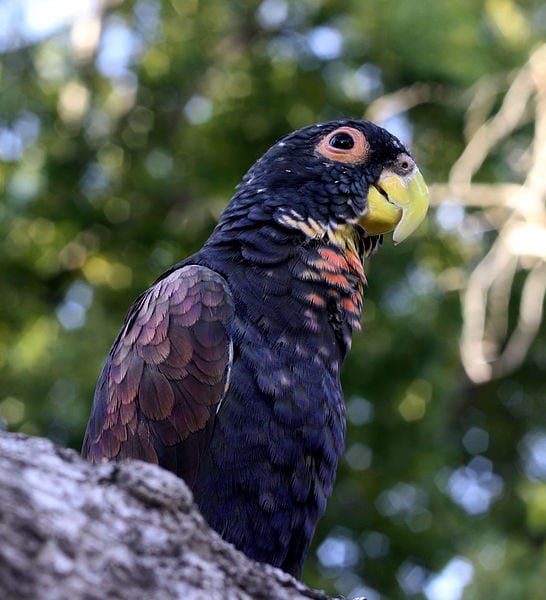
Common Health Problems
While Pionus parrots are generally healthy birds, they are susceptible to some common health problems like fungal infections, aspergillosis, and visceral gout. They can also become deficient in Vitamin A. If your bird stops eating or you see changes in its behavior like being less active, consult with your vet right away.
A well-cared-for Pionus parrot that’s fed a healthy diet is a bird that’s less prone to getting sick. Some warning signs to watch for that may indicate your Pionus parrot is sick include:
If you notice just one of these signs, call your vet right away for a consultation. The sooner a sick bird receives medical attention, the better chances it has to recover.
Diet and Nutrition
In their natural habitat, Pionus parrots eat fruits, berries, seeds, and blossoms. When kept in captivity, a Pionus parrot should be fed a high-quality parrot mix that includes a nice variety of dried fruits and seeds. On top of the parrot mix, plan on feeding your Pionus parrot fresh fruits and vegetables each day.
A Pionus parrot must eat a nutritious diet to keep the bird happy and healthy. Some dietary supplements these birds enjoy include things like strawberries, mangos, plums, pears, blueberries, carrots, cucumbers, and zucchini. You can also feed these birds things like dandelions and chickweed.
Exercise
Exercise and play are important activities for the Pionus parrot. Like other parrots, this bird’s physical and psychological health will benefit greatly if it’s allowed to move around freely and play.
As mentioned earlier, this bird needs to be provided with a variety of toys and ample room in its cage to move about freely and climb. Be sure to rotate the toys regularly to keep your bird happy. If possible, let your Pionus parrot out of the cage on a daily basis so it can enjoy some freedom.
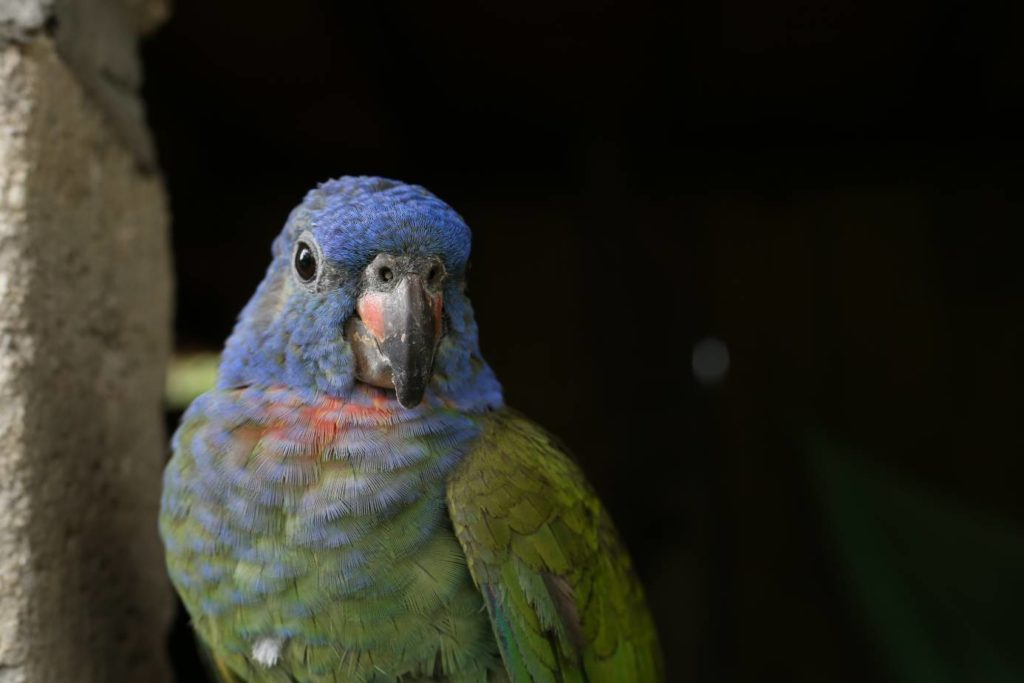
Where to Adopt or Buy a Pionus Parrot
Of the eight species, five Pionus parrot species are readily available in the United States including the Blue-headed, Bronze-winged, Scaly-headed, Dusky, and White-capped Pionus parrots. You can find these birds for sale at pet stores and from breeders.
It’s possible to adopt a Pionus parrot from an organization like a bird rescue group. This is a great way to find a perfectly healthy and happy Pionus parrot that was donated by someone who couldn’t care for it any longer or by an owner that simply lost interest in the bird. Regardless if you buy or adopt a Pionus, be sure to ask about its background and history to ensure the bird you get is healthy.
Conclusion
If you’re on the hunt for a beautiful and smart small to medium-sized parrot that’s known to be calm and friendly, you can’t go wrong with a Pionus Parrot. This bird is easy to care for and one that easily bonds with its owner.
This easy-going, sweet-natured bird can be a bit standoffish. However, if you shower the bird with attention, it will be a wonderful companion that brings you lots of joy and entertainment!
Featured Image Credit: Bill Roque, Shutterstock




